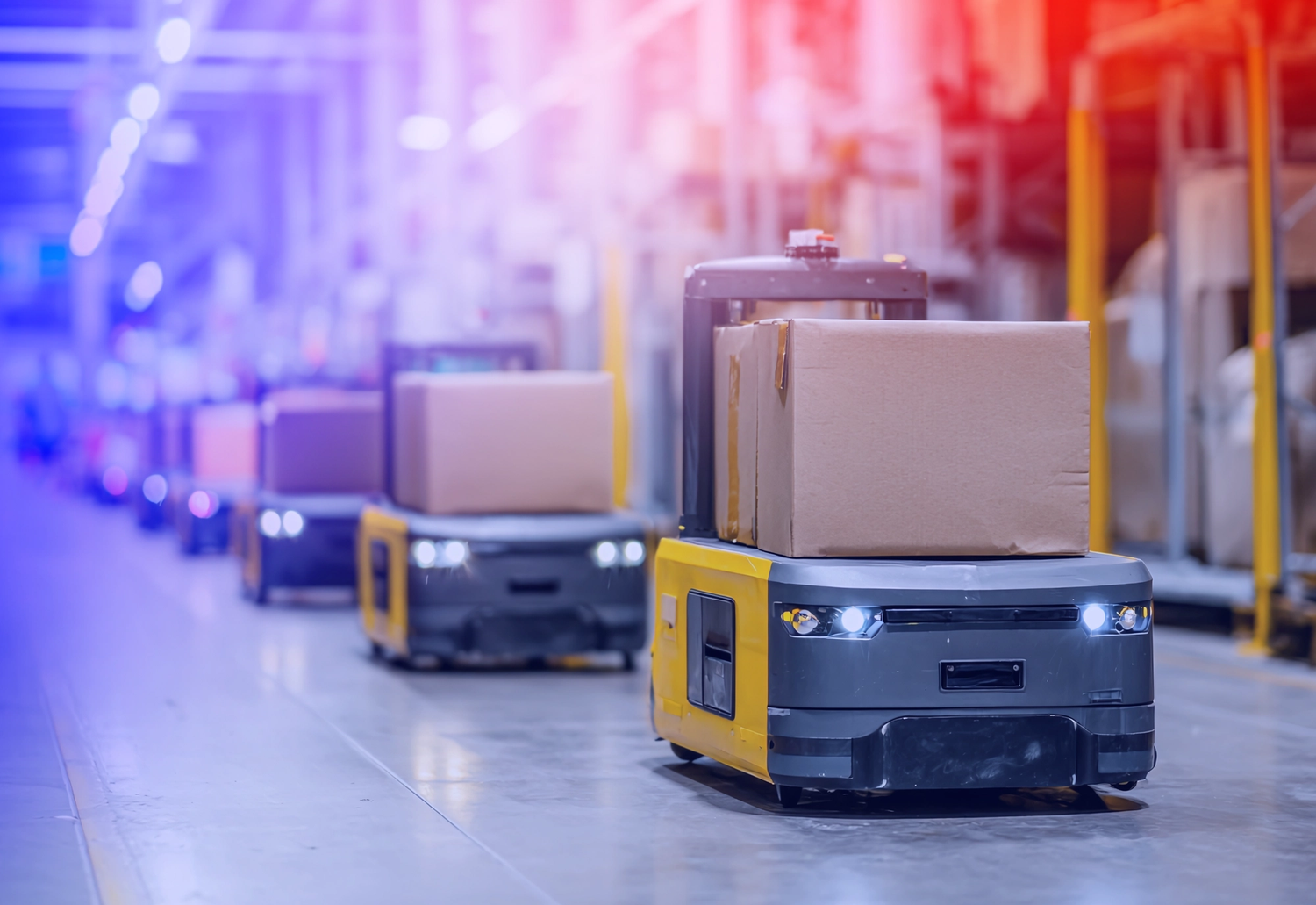Share this post

Labor shortages, rising operational costs, and service level demands are pushing more companies toward warehouse automation. But in the race to enhance efficiency and better serve end customers, companies are at risk of jumping in too soon.
We’re seeing increasing demand for automation feasibility requirements, whereby our customers need to evaluate how their supply chain processes can be automated to improve efficiency, accuracy and profitability.
We’ve outlined some things to consider when evaluating the benefits of automation. And how can you avoid making costly mistakes.
What's really driving your automation decision?
Before investing in automation, clarify the problem you’re solving. Automation isn’t a cure-all, yet many organizations leap in without truly understanding their underlying drivers.
Executives often feel pressure to modernize facilities, but the biggest gains can come from optimizing network design first. It’s about moving volume efficiently. Once that foundation is solid, you can layer in the right people, processes, equipment, and technology to enable sustainable performance.
Triggers are familiar: Rising labor costs, property pressures, ageing operations, declining service levels, or the need for resilience. But spotting a trigger isn’t enough, you need to workshop the right response.
Example: Low volume rarely justifies automation. If baseline costs are already below market or storage density is above average, automation may not make commercial sense. Without a proper diagnosis or network understanding, businesses risk investing in sophisticated solutions that fail to address the real issues and may even create new ones.
Bottom line: Don’t start with tech. Start with clarity. Diagnose first, design second, automate last. That’s how you build competitive advantage.
The biggest misconception is that you can turn automation on, and it will be self-sufficient. There is a tendency to drastically underestimate the skills and capability required to get the best out of an automated solution.
A comprehensive approach to network planning
Network planning begins with understanding what you're trying to achieve before implementing new technology.
The most successful transformations follow a deliberate sequence:
- Determine the role of each facility (node) within the broader network;
- Assess the scale of automation that suits each specific function;
- Consider organizational readiness and maturity for automation adoption; and
- Implement fit-for-purpose solutions that balance innovation with practical realities.
"The question is: what does your network look like? You need to design both the network and its nodes with a specific function in mind. Then, you can assess the level of automation required to achieve that function effectively. It might be enabling a significantly higher product flow through the node to ensure on-time delivery to customers," Tom Fitz-Walter, TMX Transform.
Understanding automation feasibility
Rather than relying on vendor promises, companies need an independent, data-driven view of whether automation makes commercial sense for their specific operation.
Automation feasibility goes beyond simple ROI calculations. It examines operational maturity, data quality, volume profiles, SKU characteristics, growth trajectories, and physical constraints. It considers the repeatability of existing processes, the nature of products being handled, and the appetite for change.
It's easy to get enamored with marketing collateral that underplays the enabling capabilities required to deliver real benefit. Companies need to do their due diligence on how proven the technology or vendor is in the relevant industry and geography.
Readiness checks that point towards automation:
- High labor spend combined with significant throughput volumes
- Unfavorable ratio of headcount to square feet and throughput
- Double handling throughout the operation
- Warehouse managers reporting they "can't throw enough labor at it"
- Year-on-year growth leading to blowouts in operational expenditure, new overflow facilities and supply chain complexity
- Mature operating systems that suggest readily available data integration points
- Facilities approaching lease expiry with a high proportion of products suitable for automated handling
The simulation advantage
Supporting readiness, TMX clients across varied industries have benefited from simulation to unlock powerful insights. Simulations have visualized end-to-end network flows, assessed the impacts of supply chain changes in a digital environment, and identified capacity constraints. Models have also informed sequenced initiatives to improve operational efficiency, tested vendor capability against complex requirements, and in some cases, demonstrated solution infeasibility due to operational gaps. Some outcomes have predicted multi-million-dollar savings in annual operating costs and increased long-term profitability.
Testing assumptions before committing capital is where simulation modeling proves invaluable, allowing companies to test automation in a risk-free environment.
When working with a pan-Asian retailer, TMX discovered through simulation that the vendor's assumptions were unrealistic. The simulation uncovered design flaws, bottlenecks, and operational constraints that would have made the solution unworkable. This analysis helped the client avoid costly implementation and laid the groundwork for TMX to support the next phase of improved concept design.
Read more about this case study here: Leading pan-Asian Retailer: Automation feasibility | TMX Transform
At times, vendors provide the most optimistic labor-saving estimates to reflect a positive business case. Simulation provides a more realistic view to help customers make informed decisions, by modelling how aspects like inbound profiles, order profiles, and SKU profiles will interact with the proposed automation.
Feeling Pressure to Automate? Start With Insight, Not Investment
For companies under pressure to automate but unsure where to start, the advice is clear: learn before you leap.
Talk to industry peers who’ve been on the journey. Engage consultants with proven experience in design, procurement, and delivery of automated solutions before committing capital.
Visit automated sites and talk to teams who have been on the journey to understand what's ahead in upskilling and change management.
Before any spend, independent feasibility assessments can clarify where automation truly adds value. TMX helps businesses diagnose pain points first, then match them with the right solution, not the other way around.
Successful automation isn’t about chasing the latest tech. It’s about making informed, evidence-based decisions that align with operational realities.
By diagnosing the real problem, validating assumptions through data and simulation, and learning from those who’ve already implemented automation, businesses can de-risk investments and design solutions that genuinely move the needle.

